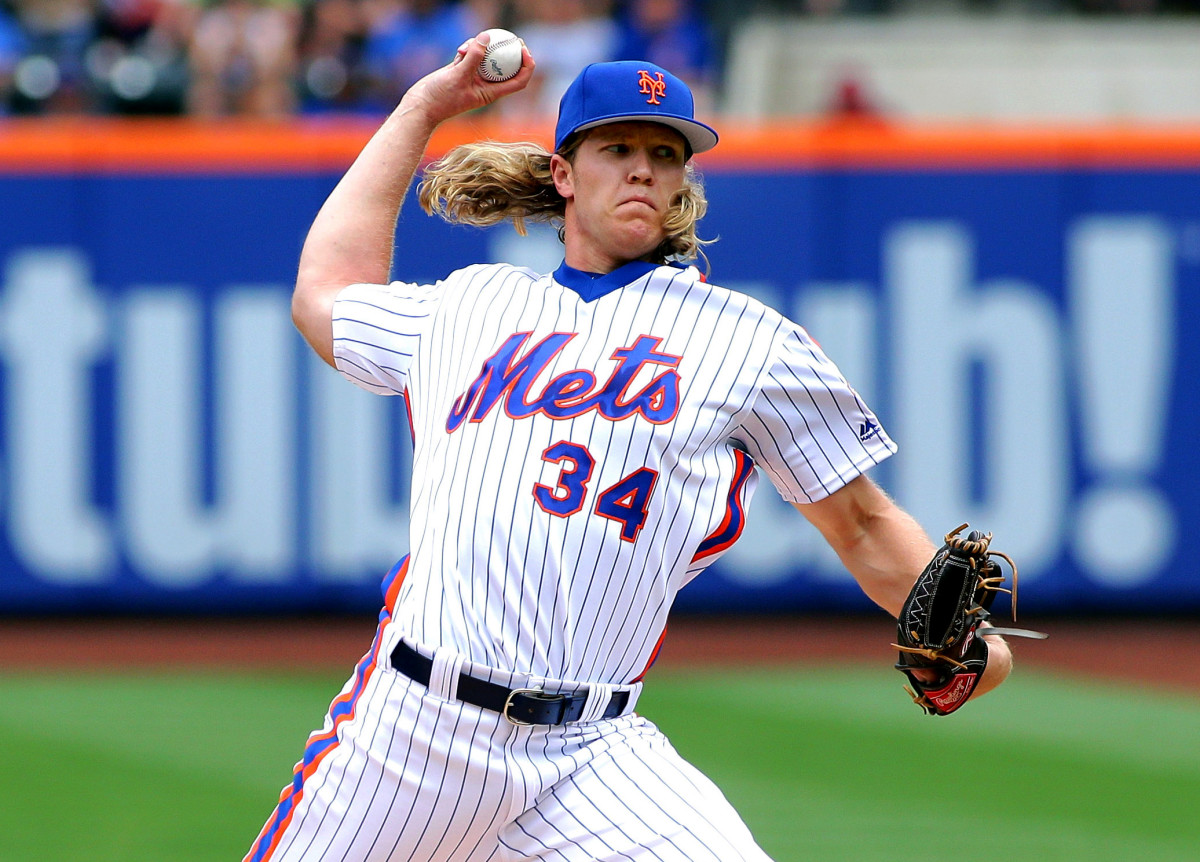A Four-Step Guide for the Dodgers to Resurrect Noah Syndergaard
The Dodgers are the baseball version of the Wash and Brush Up Co. from the land of Oz. In leading the National League in ERA six straight years, they not only have ridden All-Star starters such as Clayton Kershaw, Walker Buehler and Julio Urías, but also succeeded in makeover projects with veterans, including Brandon McCarthy, Alex Wood, Rich Hill, Andrew Heaney and Tyler Anderson. Next appointment: Noah Syndergaard.

Syndergaard signed his second straight one-year deal after Tommy John surgery. Before last season he signed with the Angels for $21 million. He was traded just before the deadline and finished the year with the Phillies. His velocity and swing-and-miss stuff still didn’t come back, so it’s back to another prove-it deal, this time at a cut to $13 million (with $1.5 million in incentives). Syndergaard turned down more money for the same reason Anderson did last year: to tap into the Dodgers’ pitching wisdom and for a shot at the postseason.
Returning to an old grip, Anderson deadened his changeup even more, getting more sink on it. He also threw sidearm sinkers to lefties, holding them to a .626 OPS, lowest since his rookie season in 2016. He made real changes. Couple with the way Los Angeles plays defense—he had a career low .247 BABIP—Anderson compiled a breakout season that he turned into a three-year, $39 million deal with the Angels.
Can Syndergaard get the Wash and Brush Up treatment? It’s a low-risk, high-upside buy for the Dodgers. Syndergaard is not returning to his beast mode from 2015 and ’16, when his most used pitch was a four-seam fastball at 97 mph to 98 mph. He has morphed into a ground ball pitcher with average velocity (93 mph to 94 mph). But here are the areas the Dodgers must try to improve with Syndergaard to turn him into a reliable starter like Anderson:
1. Fix his changeup.
Syndergaard threw his changeup more than ever last season (20%), and it was worse than ever (.316 BA, .456 SLG). It was the first time in his career it graded out as a below-average pitch. Like most changeups that get hit, Syndergaard on average did not get his changeup as far down as he did in past years.
2. Improve his four-seam spin efficiency.
Syndergaard’s favorite part of pitching is throwing darting two-seamers. He loves to see the ball run arm side with velocity, in part because he naturally pronates around the ball to get such run. Throwing a fastball with true four-seam backspin is not as natural the way his hand and wrist work, but it’s something he can improve.
Syndergaard does not have exceptional spin on his four-seamer (2,136 rpm). He went away from that pitch last season more than ever (just 15%), probably because it got waffled (.605 slugging). But when he elevates the pitch properly, the four-seamer is a good choice for him even with its low spin rate and average ride. Batters have hit .158 against his elevated four-seamer in his career. Granted, he threw much harder earlier in his career. But that average even last season was .207—at 94.1 mph.
The Dodgers know elevated four-seamers and true spin as well as anybody. Last year Anderson, who throws 91 mph, threw elevated four-seam fastballs more than twice as often as Syndergaard (14%–6%) did.
3. Find more velocity.
This is tricky. Syndergaard is 30 and three years past Tommy John surgery. Probably the most he can get back at this point is 1 mph to 2 mph. But even a small uptick will help. And it should improve his changeup. Since 2019 the gap between his sinker and changeup has shrunk from 6.4 mph to 5.1 mph. One more tick doesn’t sound like much, but batters slug .403 against sinkers 93 to 94 and .380 against sinkers 94 to 95.
4. Improve his defense of the running game.
Slow to the plate, Syndergaard is one of the worst pitchers at holding runners. He has yielded 169 stolen bases in 144 starts at an 89% success rate for the runners. Imagine next season with the bigger bases and limits on pickoffs that make stolen bases easier and more frequent.
The Dodgers must address this issue in spring training, especially because Syndergaard is a pitch-to-contact guy. A walk becomes a double. Balls in play score runners. Last season he had the eighth worst strikeout rate among all pitchers who threw 130 innings.
The lack of shifts next season could hurt contact pitchers such as Syndergaard, who has a higher career BABIP (.313) than average against (.297).
The good news is that Syndergaard stayed healthy through 143 innings last season, postseason included. The Dodgers have a healthy, 30-year-old arm with a history of success. It’s exactly the kind of smart, low-cost buy teams should make. Anderson, Heaney, Carlos Rodón, Alex Cobb, Michael Wacha and Martín Pérez were among the success stories last year. The Dodgers and Syndergaard are a perfect fit.
